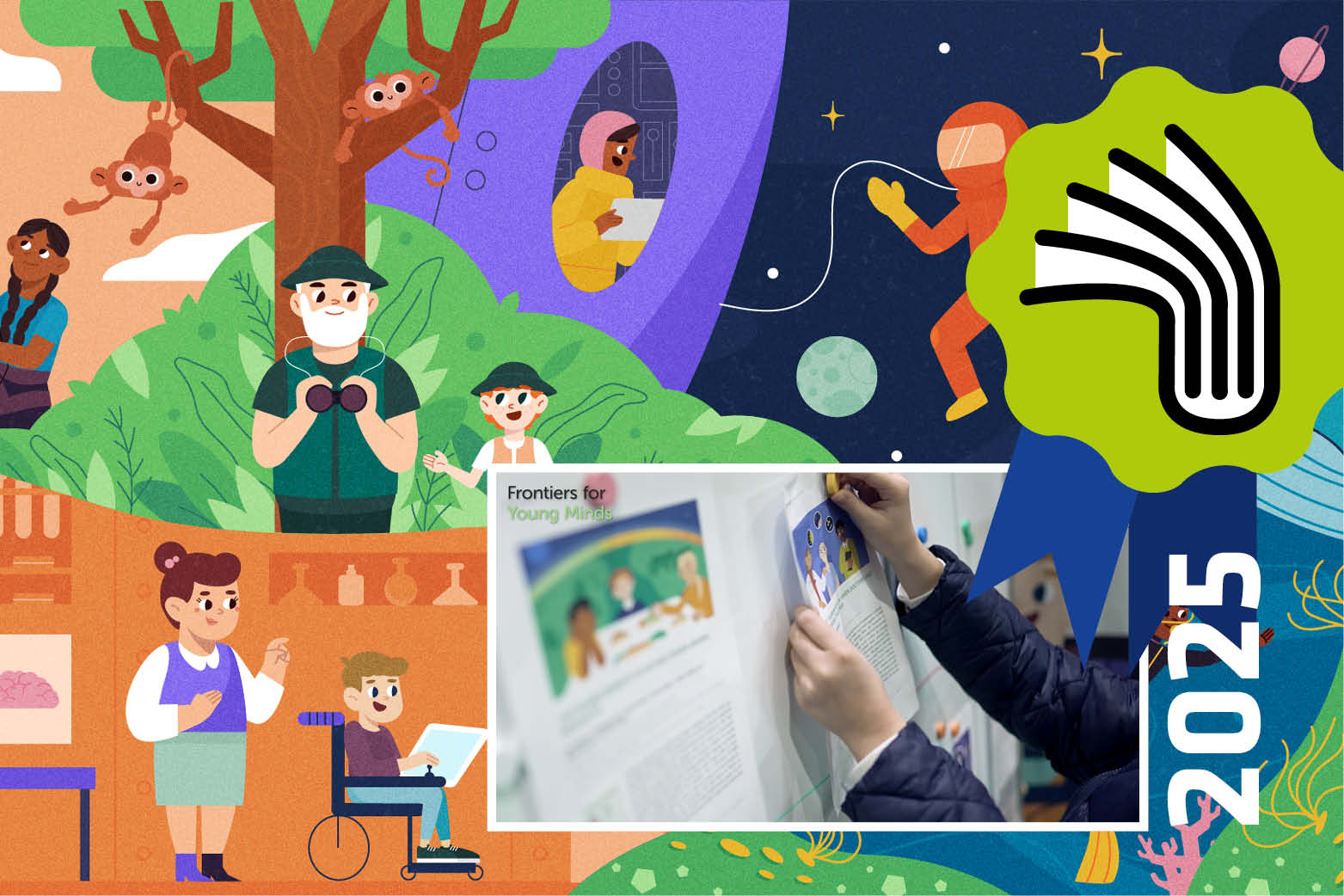
Get the latest updates in your inbox and sign up for more info!
New Frontiers in Science Communication for Kids
Frontiers for Young Minds received a Special Mention in the 2025 BolognaRagazzi Crossmedia Award (Digital Reading Experience category). We reached out to Laura Henderson, Head of Program, to learn more about this unique science journal for kids, and to hear how they’re reimagining science communication for the next generation.
1. Could you tell us a little about yourself?
Frontiers for Young Minds is a non-profit project launched by the Frontiers Research Foundation. I act as the Head of Program, directing the strategy and public impact of the project. I lead a small but mighty team of 6 people, who between them manage all the review process and publishing of 250 English articles per year, and hundreds of others in Hebrew, Arabic and Chinese as well.
2. Could you tell us a little about your project?
The project was born from an idea by our founding Chief Editor, Prof. Robert (Bob) Knight, a neurologist at UC Berkeley. He was at a conference discussing a paper, and said to his colleagues, "we should get kids involved in the peer review, they'd want to do it more". The idea stuck with him as the seed of something more, and he pitched it to the founders of the FRF and Frontiers publishing house, Kamila and Henry Markram, and they helped him launch our science journal for kids, joined by our co-Chief Editor, Prof. Idan Segev of Hebrew University, Jerusalem.
Now, the project is more than 10 years old, and though it started very small, since then the journal has directly engaged 10,000 young people aged 8-15 in our unique peer review, working from 65 countries. Thanks to their shaping of our authors' words, we've published 1700 original articles across the whole of STEMM for young readers, and because everything we publish is free to read for anyone with an internet connection, without registration, we've gained a huge audience - so far, over 54M views and downloads, giving an average of over 32K per article published.
3. Can you describe your project’s unique ingredients?
Our science engagement process - publishing science that is for young people and has been edited to be accessible and fun-to-read by their young peers - is unique globally. Our mission is to enable and inspire a whole new generation to fall in love with science, and stay science-literate, creating the engaged citizens and future scientists we will need in tomorrow's world, in order to build a better future.
We've received various award recognitions which reflect and recognize the importance of our science engagement, our education impact, and our unique innovation in publishing:
We've even attracted many of today's most distinguished scientists - Nobel Prize winners - to connect directly and inspire young people with the stories of their ground-breaking science - to date, we have published articles by 33 Nobel Laureates in our Nobel Collection, the 4 volumes of which have been read by over 4M people and featured in The Times (2025) and The Washington Post (2023).
4. How do you see the future of storytelling for children and young adults?
Storytelling is the key to the success of our science - after all, if a kid cannot understand your science, how are you going to change the world? Young readers need to connect to the "why" of the research, both why it is done and why it relates to their lives.
We translate a selection of our journal articles into Chinese, Hebrew, Arabic and French - and we are actively looking to launch translated versions in key global language demographics such as Spanish, Portuguese and Hindi. We believe kids should be able to access the stories they need in their own language, where possible AI can help with that, but should be used with expert editing to ensure accuracy.
We're also using very visual formats to support our science - we always design a cartoon to accompany every article, and require a minimum of 1 figure to visually show a process, outcome or impact of the science. This is because young people increasingly consume content online and in visual formats - video being the top choice - so we want to help them learn in the ways they enjoy.
We want to help young people to find inspiration from our stories and make a wave for positive action towards a sustainable future of healthy lives on a healthy planet - and so when we feature top science in Collections of articles, such as those with the IPCC on Climate Change, and KAUST and the UNDP on the UN Sustainable Development Goals, we make sure we highlight solutions and connect kids to the sustainability actions they can take themselves.
5. Why should a publisher/developer/author... participate in the BRCMA?
We were honoured to receive the award from such a prestigious industry organization - it brought us a lot of new audience and recognition. It helped us to see just how unique our project is within the science publishing landscape, and we are keen to continue celebrating that, and using the leverage of this wonderful award to help us engage new future partners, and go in exciting new directions!

...after all, if a kid cannot understand your science, how are you going to change the world?
The BolognaRagazzi CrossMedia Award is the prize of the Bologna Children’s Book Fair that celebrates publishing projects able to expand their narrative world beyond the book, through games, podcasts, web series, films, and more. It’s open to anyone who has created cross-media experiences, not just publishers: authors, production companies, IP developers, specialised studios... anyone who has brought the story to life across different platforms. For all the details and rules, check out the official award page.